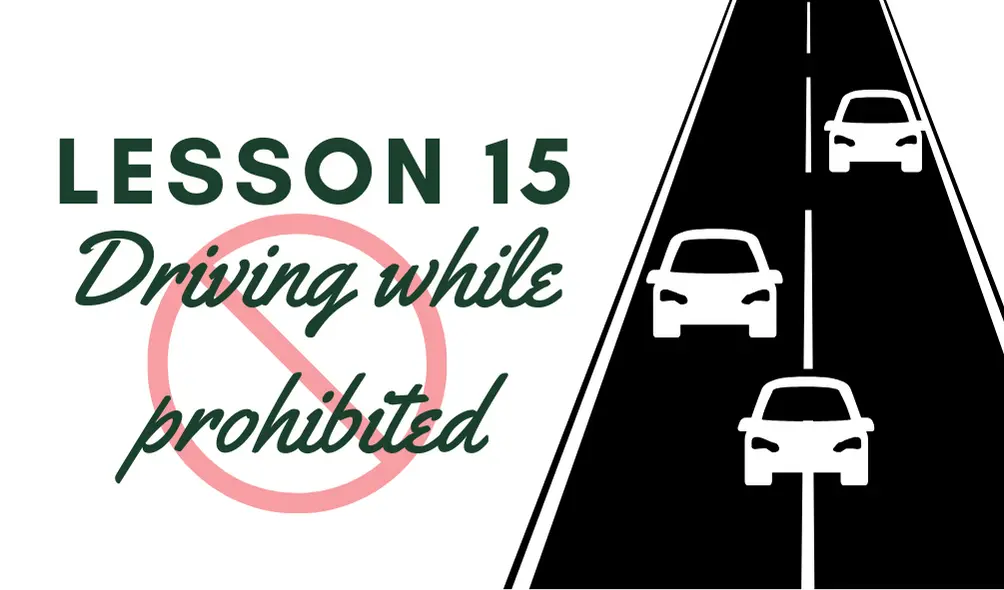In Canada, driving while prohibited can be a grave offense. It shows a flagrant disregard for traffic laws and the safety of others. When an individual drives a vehicle even though they are legally prohibited from driving, this is called prohibited driving. The article examines the Canadian legal system surrounding prohibited driving, its consequences, and measures taken to penalise and deter offenders.
Legal Framework
Driving while prohibited is governed by different laws in each province and territory but there are some common principles. Driving prohibitions can be imposed for a variety of reasons, such as license suspensions resulting from impaired driving convictions or demerit point accumulation, failure to pay fines, etc. As a part of probation or parole, individuals may be banned from driving.
Driving while disqualified or prohibited is considered a crime in many provinces. Section 259 of Canada’s Criminal Code addresses driving with a disqualification or prohibition. The section emphasizes the seriousness of this crime by describing the punishments for violators.
The Consequences Of Driving While It Is Prohibited
Driving while it is prohibited can have severe consequences in Canada, reflecting potential harm and risks to the public. Offenders may be subject to both administrative and criminal penalties. This can act as a deterrent against those who are considering prohibited driving.
1. Criminal Penalties:
A conviction for driving while prohibited can lead to imprisonment. Prison sentences can vary in length depending on factors like the criminal record of an individual, aggravating conditions, or the seriousness of the crime. The punishments for repeat offenders are often more severe and include longer prison terms.
2. Fines and Monetary Punishments:
Those convicted of driving without a license may face substantial fines. These fines are both a punishment and a deterrent. They emphasize the serious financial implications of such reckless driving. Repeat offenders may face higher fines.
3. Vehicle Impoundment:
Provinces and territories often have the power to imprison the car used by an offender who drove while forbidden. The impoundment of the vehicle is an extra penalty that further discourages individuals from driving while prohibited.
4. Extended Driving Prohibition:
Driving prohibitions can be extended beyond the first period if you are convicted of driving without a license. These extended driving prohibitions can vary in length depending on the factors involved, such as previous convictions and the circumstances of the offense.
5. Criminal Record:
A conviction for driving under the influence can result in a criminal history, and this may have long-term effects on an individual’s professional or personal life. Criminal records can affect employment, travel and many other aspects of a person’s life.
The Legal Initiatives and the Enforcement Measures
Canada has a number of legal measures and enforcement initiatives to combat driving without a license. These measures are intended to increase the enforcement of driving bans and discourage individuals from engaging in this dangerous behaviour.
1. Increased police patrols and enforcement:
Across Canada, law enforcement agencies actively patrol the roads to apprehend and identify individuals who are driving in violation of traffic laws. Police officers are able to identify and discourage prohibited driving through routine traffic checks and targeted enforcement.
2. Use of technology:
The technological advancements have led to better enforcement. Law enforcement agencies use databases and technologies to quickly identify people with driving bans. This allows them to swiftly take action against the offenders.
3. Public Awareness Campaigns
The goal of public awareness campaigns is to inform the general population about the dangers associated with driving under the influence. The campaigns highlight the potential danger to the public, the possible legal consequences, and the necessity of obeying driving restrictions. Authorities aim to promote responsible driving by educating people about traffic laws and creating a culture that adheres to them.
4. Strengthening Legal Penalties:
To strengthen the legal penalty for driving when it is prohibited, legislative changes or amendments can be made to the Criminal Code. The penalties for driving while prohibited may be increased by increasing fines and increasing imprisonment sentences.
Prevention and Rehabilitation
In addition to legal penalties, prevention measures and rehabilitation programs are also important in combating the underlying causes of driving under prohibition. Authorities recognize that certain individuals might engage in prohibited driving because of underlying issues and strive to implement the measures to promote rehabilitation.
1. Driver Rehabilitation Programs
Some provinces or territories have driver rehabilitation programs that address the issues which led to driving bans. The programs can include education about responsible driving, treatment for substance abuse if applicable, and counseling on underlying issues that contribute to prohibited driving.
2. Community Support and Outreach:
Law enforcement agencies, support groups, and community organizations can work together to create a supportive network for those facing driving restrictions. Programs of community outreach may offer resources, counselling, and assistance to individuals who are attempting to reintegrate themselves into society.

Conclusion:
In Canada, driving while it is prohibited can be a grave offense. It puts the public at risk and shows a lack of respect for traffic rules. This offense is a serious one, as evidenced by the legal system, its consequences and its enforcement. Authorities aim to create a safe environment for Canadian drivers by combining legal sanctions, prevention measures and rehabilitation. Canada is committed to the fight against driving under suspension. The government’s ongoing efforts to raise public awareness and to support law enforcement are all part of this commitment.
